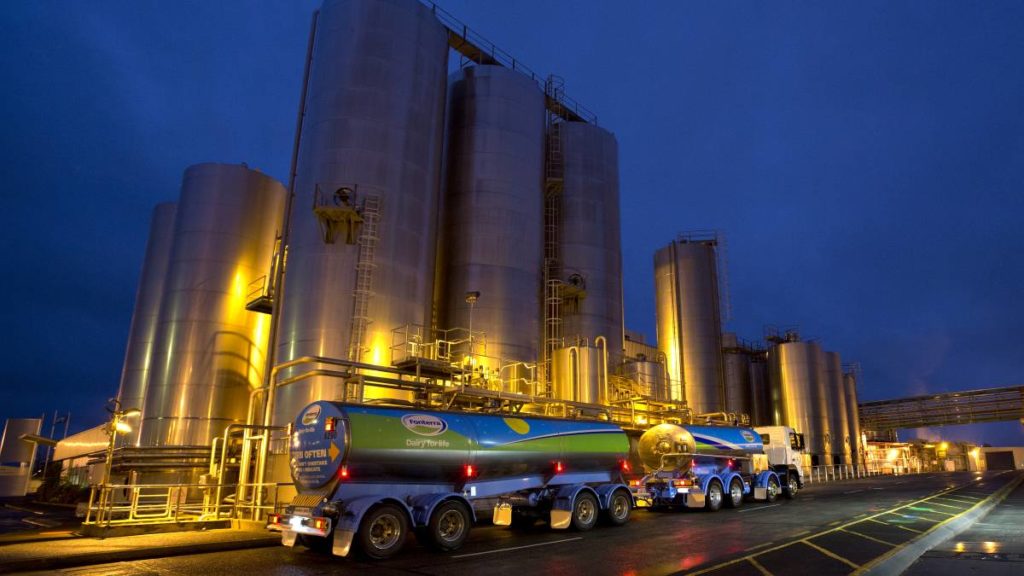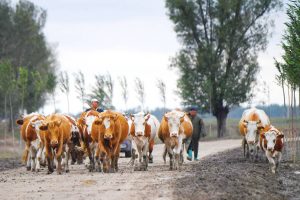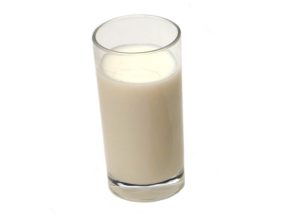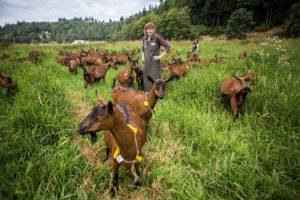It was only less than two years ago that Fonterra, New Zealand’s biggest company, saw itself as diary giant bestriding the world.
Now a series of losses and mishaps is prompting the world’s top dairy exporter to reconsider and go back to its roots. After posting its biggest-ever net loss, the company that prides itself on being New Zealand’s biggest exporter, is considering a retreat from its costly Chinese farms and dairy product operations in Brazil.
The company’s earnings announcement Thursday showed a net loss of 605 million New Zealand dollars ($381 million) for the year through July. This owed mainly to more than NZ$800 million in write-downs after reassessing operations in China and Brazil that could now be put on the chopping block.
The disappointing results are forcing the company to reassess its plan to challenge multinational giants like Nestle and Dannon through aggressive overseas expansion.
“Eighteen months ago, we might have said we’re a global dairy giant, here to make a difference in the lives of 2 billion people,” CEO Miles Hurrell said at Thursday’s earnings briefing.
But he went on to suggest a shift away from overseas expansion and toward the domestic operations. “At our heart, we’re a cooperative, doing amazing things with New Zealand milk to enhance people’s lives and create value for our customers and our farmer owners.”
Formed in 2001 from the merger of two dairy co-ops, Fonterra has become one of New Zealand’s most prominent businesses. Though it was established to safeguard the interests of local dairy farmers, the company now boasts presences in Australia, China and Latin America.
“In our opinion, Fonterra somewhat lost its way over the past seven years,” said Graeme Ferguson, credit analyst at S&P Global Ratings, which has twice lowered the company’s credit rating.
The common element in both downgrades was an “ambitious capital investment program that sought to grow Fonterra beyond its core function of collecting, processing, and selling New Zealand milk,” Ferguson said.
China has been a particularly important market, generating about 20% of Fonterra’s revenue. The company began producing raw milk in China about a decade ago, leveraging its quality control expertise in a country where food safety is a long-standing concern.
Fonterra has reportedly invested more than NZ$1 billion in this business, but it has struggled with climate differences and inability to transplant sophisticated cattle farming to a new setting. The segment has consistently lost money, logging a NZ$14 million loss before interest and tax last fiscal year.
“Milk in China costs a lot more than milk in New Zealand to produce, so you have to be able to sell it at a really good price to make any money,” said Keith Woodford, honorary professor of agri-food systems at Lincoln University in New Zealand, who noted that even some big, modern Chinese dairies have gone under.
“A lot of the feed for the cows in China actually comes from places like the United States, and also from South America, so the feed over there is really expensive,” he said.
Fonterra Chief Financial Officer Mark Rivers suggested the business could end up being sold off. “The fresh category for milk in China is an attractive category,” but “exactly how we participate in that is a second question,” he said.
Other Fonterra investments in China have also fared poorly.
In 2015, the company took an 18.8% stake in local milk powder maker Beingmate Baby & Child Food. But Beingmate, while strong in bricks-and-mortar sales channels, was slow to adapt to the rapid rise of e-commerce, an industry insider said. Beingmate’s revenue fell by half between 2014 and 2018 to 2.4 billion yuan ($337 million), and Fonterra said in August it will sell down its stake.
This was not Fonterra’s first misstep in China’s milk powder market. The company owned 43% of Sanlu Group at the time of the 2008 scandal in which contaminated Sanlu products left several infants dead and sickened tens of thousands more. Sanlu went bankrupt, and Fonterra failed to recoup its investment.
Chinese consumers tend to doubt the quality of domestic dairy products, even if New Zealanders made them, Woodford said.
Past management sought to grow Fonterra from a dairy product processor and exporter into a global food industry player. Fonterra started to think of itself as a big company, but its expansion strategy of the last decade-plus has failed, an agricultural industry consultant said.
The steep decline in its fortunes has driven Hurrell to pursue a sweeping overhaul. The company is undertaking a “strategic review” of a dairy production and sales joint venture with Nestle that could result in a sale. Since Hurrell took over as CEO in March, Fonterra has announced the sale of Venezuelan consumer operations and the planned closure of an Australian processing plant.
Fonterra’s shares slid from a peak above NZ$6.60 in January 2018 to a low of NZ$3.15 late last month. They have hovered in the low NZ$3 range since mid-August, when the company released guidance warning of the massive write-downs.
Fonterra’s struggles risk harming New Zealand’s economy. The company is New Zealand’s largest by sales, and its dairy products account for more than 20% of the country’s exports.













